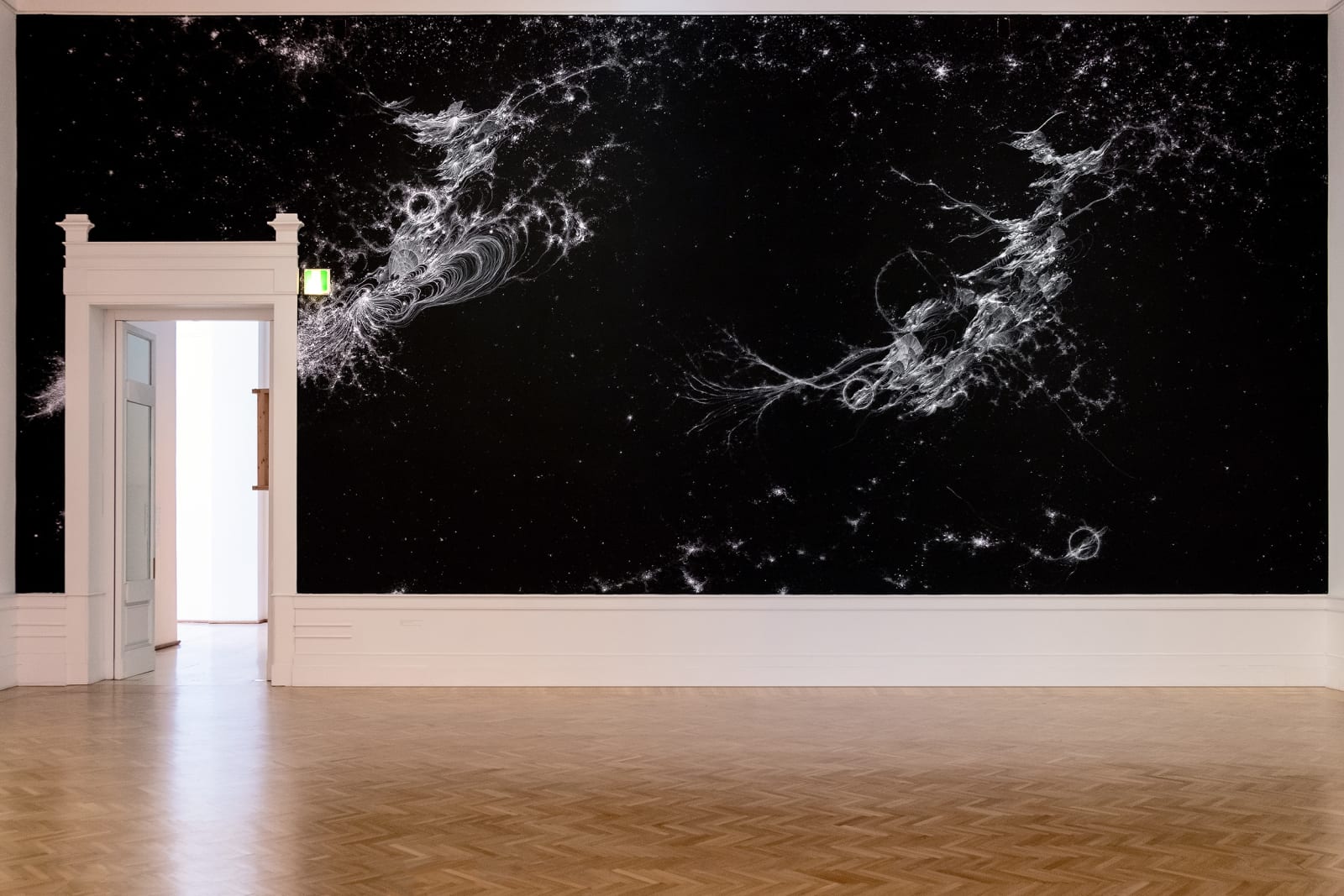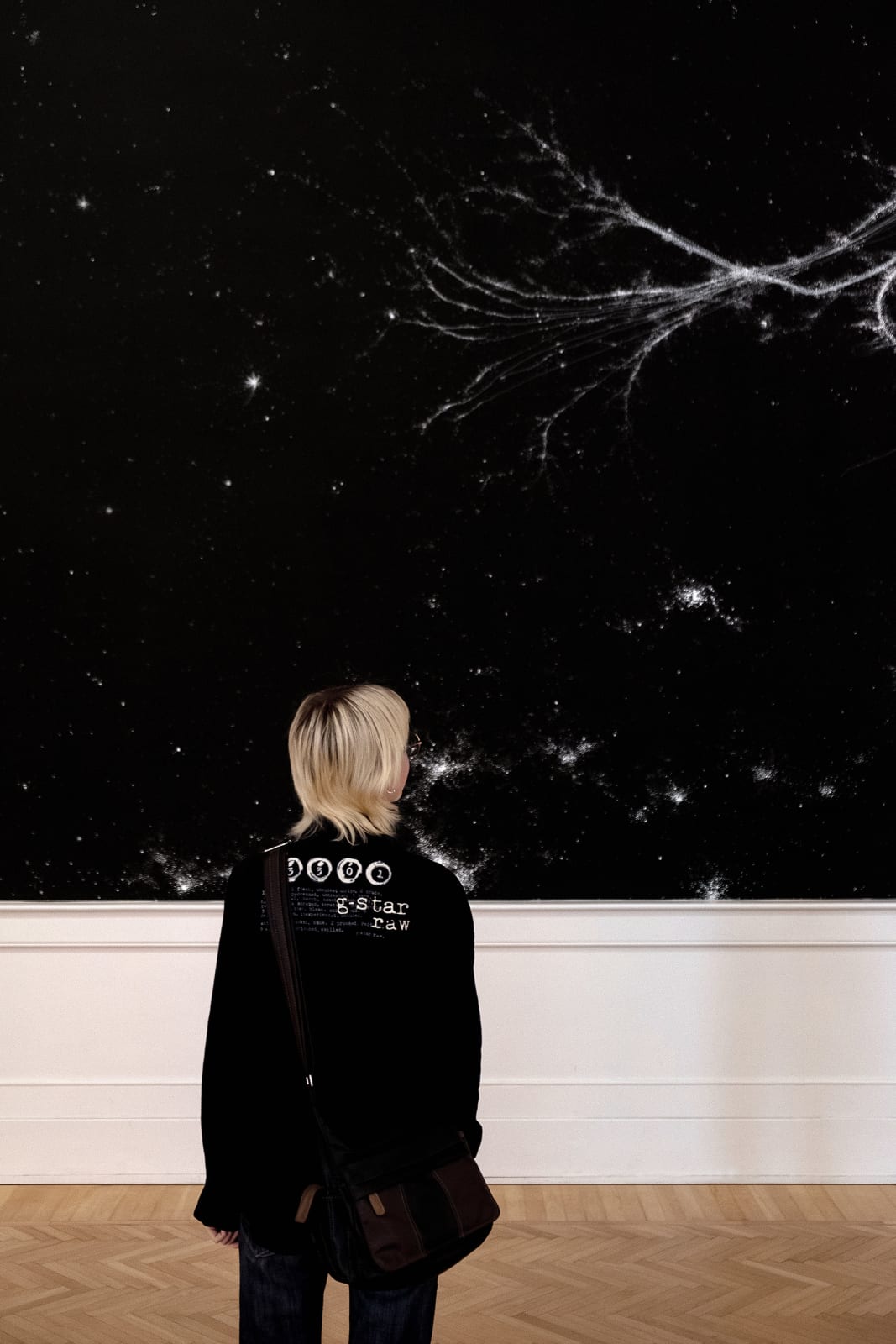Hotspot: caring for a burning world: National Gallery of Modern and Contemporary Art (Galleria Nazionale d'Arte Moderna e Contemporanea), Rome,
The Galleria Nazionale d’Arte Moderna e Contemporanea presents, from Monday 24 October 2022 to Sunday 26 February 2023, the collective exhibition Hot Spot, curated by Gerardo Mosquera.
Hot Spot is titled after the work of the same name by Mona Hatoum (Hot Spot, 2013), included in the exhibition: a large installation in iron and neon which portrays planet Earth aglow with a red light symbolising the conflicts that make it scorching hot.
The work tells of how the disruptive way in which human society has been organised seems to lead to an environmental catastrophe.
The failure of the current project of modernity and of the very possibility of a harmonious development of humanity in its environment is today more than evident and firmly takes centre stage in the contemporary debate.
The exhibition itinerary brings together the multiple responses of the artists to these conditions through the poetic power of art. The selected works delve into the complexity of the current situation, offering not so much a perspective of social denunciation as an aesthetic activism intended to stimulate thinking and raise awareness about the impending disaster, in order to imagine a different relationship with the planet.
As curator Gerardo Mosquera, explains: “It is only natural that art should address such burning issues: many artists have done this during the course of their career in a militant, responsive and relevant way. This exhibition, on the other hand, offers its contribution to ecological-social criticism through a more indirect, but no less urgent and timely route. The exhibition path does not consider the issue as something specific, but opens it up and amplifies it by exploring other aspects, at times ambiguous and contradictory, or even harmonious, suggesting the possibility of a rebirth of the natural environment, since life on Earth has an enormous capacity for resilience”.
If the works by Mona Hatoum and Pier Paolo Calzolaridescribe the extreme effects that climate can have through visual and materic contrast, in Kim Juree’s “Flooded”, where we can witness the dissolution of a clay architecture we are shown what kind of disruptive force the elements, such as water, are able to express.
Gideon Mendel with his photographs, on the other hand, has documented the devastation left by the increasingly frequent occurrence of floods in various parts of the Planet.
Halfway between documentation and stage photography, the didactic approach in these works is reinforced by its aesthetic component. Much in the same way, Ange Leccia’s video suggests the idea of increasing sea levels through evocative images of gravity-defying rising waters.
The vertiginous growth of the human population and its voracious and uncontrolled expansion, with the resulting exploitation of environmental resources, also brings to the forefront the relationship with the other living beings who populate the Earth and who, during the lockdown, have been seen reclaiming vital space for themselves by appearing unexpectedly along the city streets. These appearances recur in Davide Rivalta’s sculptures, whose gorillas - an endangered animal - greet the public at the entrance of the Gallery.
The biodiversity crisis, the spiralling extinction of animal and plant species, and the criticism towards the violent development of urbanised areas are at the centre of the works of Daphne Wright and Ida Applebroog, and emerge with subtle irony in the small roadrunner standing still at the US-Mexico border portrayed by Alejandro Prieto.
There is no lack of contradictions, as in the disturbing image in Jonathas de Andrade’s video where the fisherman embraces and caresses the fish he is making agonise.
The increase in the population of the planet goes hand in hand with the overproduction of goods and the consequent increase in waste and rubbish: this is the rubbish depicted with eloquent elegance by Chris Jordan in its massiveness. The world’s ever increasing urbanisation and technologisation processes show little consideration for the natural environment, giving rise to disturbing phenomena such as the black tides depicted by Allan Sekula. The plants agitated by machines in Rachel Young’s wild moving sculptures seem to comment on this, as well as on genetic manipulation and the shift to cyborgs and robotisation. Johanna Calle’s visual lyricism acts in the opposite way: she builds a tree with the use of a typewriter.
Trees are also the protagonists of the works by Cecylia Malik, who draws attention to the indiscriminate deforestation that has taken place in Poland, by contrasting the death of the severed trunks with life, with mothers who, sitting on what remains of the forest, breastfeed their children. With five mirror tree trunks, Michelangelo Pistoletto creates an open image on the relationships between human presence and the environment. In his painting, Alex Cerveny transforms the human silhouette into a fruit tree, surrounded by birds.
Other works remind us, as John Baldessari’s video does, of how all too often man places himself in a position of almost patriarchal superiority over nature, imposing himself upon it. Cristina Lucas, in “To the Wild”, shows a brave young woman that defies the system through her own mechanisms. By resorting to legal practices she disintegrates her relationship with civilization in order to return to nature, reversing the processes of redemption founded in the Middle Ages and long used in Europe and its colonies.
The video clip by the duo Ibeyi seems to express the opposite of hierarchical control over nature in a song addressed to the river, as if it were Ochún, the Yoruba goddess of fresh water, to whom the artists sing in the Nigerian language.
On an entire wall of the gallery, the waters float in the sky, in a liquid and poetic cosmology, specifically painted for this exhibition by Sandra Cinto.
Andrea Santarlasci’s work can instead be seen as a delicate expression of the contrast between nature and the built environment. Ayrson Heráclito and Joceval Santos, artists as well as Candomblé priests, perform a great ebbó, a ceremonial “cleansing” of the world carefully prepared according to the Yoruba traditions of Brazil. The work thus combines Afro-Brazilian sacred rituality with performance, in an imaginative attempt to rid the earthly sphere of the evils that afflict it.
By contrast, other artists hint instead at a harmonious coexistence with nature, as in the powerful photograph of yucca fingers staged by Raquel Paiewonski, where the hand (the biological tool to which we owe the emergence of Homo Sapiens) becomes an edible root that was the main food cultivated by the Tainos in the pre-Columbian Caribbean, and still continues to be important in the region’s diet today.
Glenda León suggests a renascence in her flowering piano. Life has an enormous capacity for resilience, which makes it bounce back from adverse or unusual situations, always offering some hope. The protagonists in Renata Boero's work Kronos are the times of phenomena and transformations, the relationships between materials, and their attraction or repulsion. Almost like a ritual, in which colour is also smell and sensation, in a quest for totality where the inexorability of natural matter, abandons all linguistic mediation and leads directly to life.
These works are based on methodological plurality, on the communicative power of the image, on poetry, on semantic drive. Some of the works were created without the specific intention of commenting on ecological issues, but were included for their ability to contribute to the elaboration of the topic. Ultimately, each artwork is polysemic and always open to interpretation. “Hot Spot. Caring for a burning world” does not propose slogans but rather wants to take care of the world also through art, by inviting us to reflect, in very diverse and subjective ways, on the serious problems of the planet in their complexity, and not only on an ecological and social level.
All installation images above: Photo by Adriano Mura






